
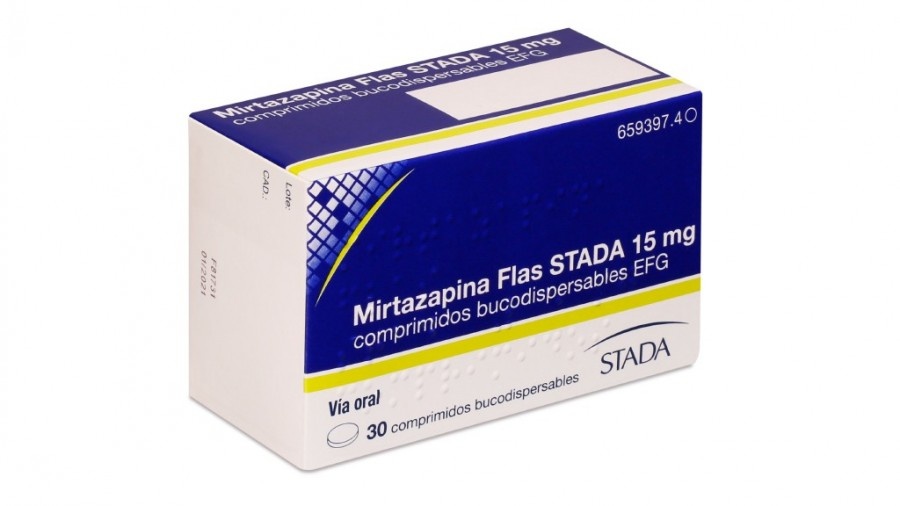
МИРТАЗАПИН ТАРБИС 15 мг ТАБЛЕТКИ ДЛЯ РАЗЖЕВАНИЯ/ДЛЯ ПЕРОРАЛЬНОГО РАССАЫВАНИЯ

Спросите врача о рецепте на МИРТАЗАПИН ТАРБИС 15 мг ТАБЛЕТКИ ДЛЯ РАЗЖЕВАНИЯ/ДЛЯ ПЕРОРАЛЬНОГО РАССАЫВАНИЯ

Инструкция по применению МИРТАЗАПИН ТАРБИС 15 мг ТАБЛЕТКИ ДЛЯ РАЗЖЕВАНИЯ/ДЛЯ ПЕРОРАЛЬНОГО РАССАЫВАНИЯ
Введение
Инструкция: информация дляпользователя
Миртазапин ТАРБИС 15 мг буко-диспергируемые таблетки ЕФГ
Прочитайте внимательно всю инструкцию перед началом приема этого препарата, поскольку она содержит важную информацию для вас.
- Сохраните эту инструкцию, поскольку вам может потребоваться перечитать ее
- Если у вас есть какие-либо вопросы, проконсультируйтесь с вашим врачом или фармацевтом.
- Этот препарат назначен вам исключительно, и не передавайте его другим людям, даже если у них такие же симптомы, как у вас, поскольку это может нанести им вред.
- Если вы испытываете побочные эффекты, проконсультируйтесь с вашим врачом или фармацевтом, даже если это побочные эффекты, не указанные в этой инструкции.
Содержание инструкции:
- Что такое Миртазапин Тарбис и для чего он используется
- Что вам нужно знать перед началом приема Миртазапина Тарбис
- Как принимать Миртазапин Тарбис
- Возможные побочные эффекты
- Хранение Миртазапина Тарбис
- Содержание упаковки и дополнительная информация
1. Что такое Миртазапин Тарбис и для чего он используется
Миртазапин Тарбис относится к группе препаратов, называемых антидепрессантами.
Миртазапин используется для лечения депрессии.
2. Что вам нужно знать перед началом приема Миртазапина Тарбис
Не принимайте МиртазапинТарбис
- если вы аллергичны (гиперчувствительны) к активному веществу или любому другому компоненту этого препарата (перечисленному в разделе 6). В этом случае проконсультируйтесь с вашим врачом как можно скорее перед приемом Миртазапина Тарбис.
- если вы принимаете или最近 принимали (в течение последних двух недель) препараты, называемые ингибиторами моноаминоксидазы (ИМАО).
НЕ ПРИНИМАЙТЕ - ИЛИ - ПРОКОНСУЛЬТИРУЙТЕСЬ С ВАШИМ ВРАЧОМ ПЕРЕД НАЧАЛОМ ПРИЕМА МИРТАЗАПИНА ТАРБИС:
Если вы когда-либо испытывали сильную кожную сыпь или отшелушивание кожи, пузыри или язвы во рту после приема миртазапина или других препаратов.
Предостережения и меры предосторожности
Проконсультируйтесь с вашим врачом или фармацевтом перед началом приема Миртазапина Тарбис.
Применение у детей и подростков младше 18 лет
Миртазапин Тарбис не должен использоваться обычно в лечении детей и подростков младше 18 лет. Однако вам нужно знать, что у пациентов младше 18 лет существует более высокий риск побочных эффектов, таких как попытки самоубийства, суицидальные мысли и враждебность (в основном агрессия, конфронтационное поведение и раздражительность) при приеме этого класса препаратов. Несмотря на это, врач может назначить Миртазапин Тарбис пациентам младше 18 лет, когда решит, что это наиболее подходящий вариант для пациента. Если врач назначил Миртазапин Тарбис пациенту младше 18 лет и вы хотите обсудить это решение, пожалуйста, обратитесь к вашему врачу. Вы должны сообщить вашему врачу, если появляются или ухудшаются какие-либо из симптомов, указанных выше, у пациентов младше 18 лет, принимающих Миртазапин Тарбис. Кроме того, еще не известны эффекты на безопасность в долгосрочной перспективе, связанные с ростом, созреванием и развитием знаний и поведения миртазапина в этой возрастной группе.
Суицидальные мысли и ухудшение депрессии или тревожного расстройства
Если вы испытываете депрессию и/или тревожное расстройство, вы можете иногда испытывать мысли о самоубийстве или причинении вреда себе. Эти мысли могут усиливаться при приеме антидепрессантов впервые, поскольку эти препараты требуют времени, чтобы начать действовать, обычно около двух недель, хотя в некоторых случаях это может занять больше времени.
Вы будете более склонны к таким мыслям:
- Если вы ранее испытывали мысли о самоубийстве или причинении вреда себе.
- Если вы молодой взрослый. Данные клинических испытаний показали увеличение риска суицидального поведения у молодых взрослых (младше 25 лет) с психиатрическими заболеваниями, которые были behandены антидепрессантом.
?Если в любой момент вы испытываете мысли о самоубийстве или причинении вреда себе, проконсультируйтесь с вашим врачом или обратитесь напрямую в больницу.
Может быть полезно для вас сказать близкому родственнику или другу, что вы испытываете депрессию или тревожное расстройство, и попросить его прочитать эту инструкцию. Вы можете спросить их, думают ли они, что ваша депрессия или тревожное расстройство ухудшилось, или если они обеспокоены изменениями в вашем поведении.
Аналогично, будьте особенно осторожны с Миртазапином Тарбис:
- если у вас есть или были когда-либо следующие расстройства
?Сообщите вашему врачу о этих ситуациях перед приемом Миртазапина Тарбис, если вы еще не сделали этого:
- падения(эпилепсия). Если появляются падения или ваши падения становятся более частыми, прекратите прием миртазапина и обратитесь к вашему врачу немедленно;
- болезни печени, включая желтуху. Если появляется желтуха, прекратите прием миртазапина и обратитесь к вашему врачу немедленно;
- болезни почек;
- болезнь сердцаили низкое кровяное давление;
- шизофрения. Если психотические симптомы, такие как параноидальные мысли, становятся более частыми или тяжелыми, обратитесь к вашему врачу немедленно;
- биполярная депрессия(чередуются периоды возбуждения/гиперактивности и периоды депрессии). Если вы начинаете чувствовать себя возбужденно или чрезмерно активно, прекратите прием миртазапина и обратитесь к вашему врачу немедленно;
- диабет(вам может потребоваться调整ировать дозу инсулина или других антидиабетических препаратов);
- болезни глаз, такие как повышение давления в глазу (глаукома);
- затруднения при мочеиспускании, которые могут быть вызваны увеличением размера предстательной железы;
- если появляются признаки инфекции, такие как высокая температура без объяснения, боль в горле и язвы во рту
?Прекратите прием Миртазапина Тарбис и обратитесь к вашему врачу немедленно для проведения анализа крови. В редких случаях эти симптомы могут быть признаками нарушений в производстве кровяных клеток в костном мозге. Хотя эти симптомы редки, они могут появиться через 4-6 недель лечения.
- если вы пожилой человек, вы можете быть более чувствительны к побочным эффектам антидепрессантов.
- были зарегистрированы тяжелые кожные реакции, такие как синдром Стивенса-Джонсона (ССД), токсический эпидермальный некролиз (ТЭН) и лекарственные реакции с эозинофилией и системными симптомами (ДРЕСС), при приеме миртазапина. Прекратите прием и обратитесь за медицинской помощью немедленно, если вы заметите какие-либо из этих симптомов, описанных в разделе 4, связанных с этими тяжелыми кожными реакциями.
- если вы когда-либо испытывали тяжелые кожные реакции, не следует возобновлять лечение миртазапином.
Применение Миртазапина Тарбис с другими препаратами
Сообщите вашему врачу или фармацевту, если вы принимаете (или собираетесь принимать) любой из препаратов из следующего списка.
Также сообщите вашему врачу или фармацевту, если вы используете,最近 использовали или можете использовать любой другой препарат.
Не принимайте Миртазапин Тарбисвместе с:
- ингибиторами моноаминоксидазы(ингибиторами МАО). Аналогично, не принимайте миртазапин в течение двух недель после прекращения приема ингибиторов МАО. Если вы прекратите прием миртазапина, также не принимайте ингибиторы МАО в течение двух недель.
Примерами ингибиторов МАО являются моклобемид, транилципромин (оба являются антидепрессантами) и селегилин (для болезни Паркинсона).
Будьте осторожны, еслипринимаете Миртазапин Тарбис вместе с:
- антидепрессантами, такими как селективные ингибиторы обратного захвата серотонина (СИОЗС), венлафаксин и Л-триптофан или триптаны(используемые для мигрени), трамадол(для боли), линезолид(антибиотик), литий(используемый для лечения некоторых психиатрических расстройств) и препараты на основе травы Святого Иоанна –Hypericum perforatum(лекарственное растение для депрессии). В редких случаях миртазапин, принимаемый отдельно или вместе с этими препаратами, может привести к так называемому серотонинергическому синдрому. Некоторые из симптомов этого синдрома включают: неexplained температура, потоотделение, сердцебиение, диарею, мышечные сокращения (не контролируемые), озноб, чрезмерные рефлексы, агитацию, изменения настроения и потерю сознания. Если вы испытываете комбинацию этих симптомов, проконсультируйтесь с вашим врачом немедленно.
- антидепрессант нефазодон. Он может увеличить количество миртазапина в крови. Сообщите вашему врачу, если вы принимаете этот препарат. Вам может потребоваться уменьшить дозу миртазапина или увеличить ее снова после прекращения приема нефазодона.
- препараты для тревоги или бессонницытакие как бензодиазепины.
препараты для шизофрениитакие как оланзапин.
препараты для аллергиитакие как цетиризин.
препараты для сильной болитакие как морфин.
В сочетании с этими препаратами миртазапин может увеличить сонливость, вызванную этими препаратами.
- препараты для инфекций:препараты для бактериальных инфекций (такие как эритромицин), препараты для грибковых инфекций (такие как кетоконазол) и препараты для ВИЧ/СПИДа (ингибиторы протеазы ВИЧ).
Если они принимаются вместе с миртазапином, эти препараты могут увеличить количество миртазапина в крови. Сообщите вашему врачу, если вы принимаете эти препараты. Вам может потребоваться уменьшить дозу миртазапина или увеличить ее снова после прекращения приема этих препаратов.
- препараты для эпилепсиитакие как карбамазепин и фенитоин; препараты для туберкулезатакие как рифампицин.
Если они принимаются вместе с миртазапином, эти препараты могут уменьшить количество миртазапина в крови. Сообщите вашему врачу, если вы принимаете эти препараты. Вам может потребоваться увеличить дозу миртазапина или уменьшить ее снова после прекращения приема этих препаратов.
- препараты для предотвращения свертывания кровитакие как варфарин.
Миртазапин может увеличить эффекты варфарина в крови. Сообщите вашему врачу, если вы принимаете этот препарат. В случае одновременного приема рекомендуется, чтобы ваш врач проводил контроль крови.
Применение Миртазапина Тарбис с пищей, напитками и алкоголем
Вы можете чувствовать сонливость, если выпиваете алкоголь во время лечения миртазапином.
Рекомендуется не употреблять алкоголь.
Вы можете принимать миртазапин с пищей или без нее.
Беременность, лактация и фертильность
Проконсультируйтесь с вашим врачом или фармацевтом перед использованием любого препарата.
Ограниченный опыт применения миртазапина у беременных женщин не указывает на увеличение риска. Однако следует быть осторожным при использовании во время беременности.
Если вы беременны или кормите грудью, считаете, что можете быть беременной или планируете стать беременной, проконсультируйтесь с вашим врачом или фармацевтом перед использованием этого препарата. Если вы принимаете миртазапин до, во время или сразу после родов, ваш ребенок будет обследован на возможные побочные эффекты.
Если вы принимаете миртазапин во время беременности, сообщите об этом вашей акушерке и/или врачу. Когда принимаются во время беременности подобные препараты (называемые антидепрессантами, ингибиторами обратного захвата серотонина: ИОЗС), может увеличиться риск того, что ребенок будет страдать от тяжелого заболевания, называемого персистирующей пульмональной гипертензией новорожденного (ППГН), что приводит к тому, что ребенок дышит чаще и кажется синим. Эти симптомы обычно начинаются в течение первых 24 часов после рождения. Если это происходит в вашем случае, вы должны немедленно обратиться к вашему врачу и/или акушерке.
Проконсультируйтесь с вашим врачом, можно ли кормить грудью во время приема Миртазапина Тарбис.
Вождение и использование машин
Миртазапин Тарбис может влиять на вашу концентрацию или бдительность.
Во время лечения Миртазапином Тарбис вы можете чувствовать сонливость или головокружение. Не驾驶уйте транспортные средства и не используйте инструменты или машины, пока не будете знать, как лечение Миртазапином Тарбис влияет на вас.
Миртазапин Тарбис содержит аспартам
Этот препарат может быть вредным для людей с фенилкетонурией, поскольку содержит аспартам, который является источником фенилаланина.
3. Как принимать Миртазапин Тарбис
Следуйте точно инструкциям по применению этого препарата, указанным вашим врачом или фармацевтом. В случае сомнений проконсультируйтесь с вашим врачом или фармацевтом.
Какой дозы принимать
Начальная доза обычно составляет 15 или 30мг в день.Ваш врач может порекомендовать увеличить дозу через несколько дней до количества, которое лучше всего подходит для вас (между 15 и 45 мг в день). Обычно доза одинакова для всех возрастов. Однако, если вы пожилой человек или если у вас есть заболевание почек или печени, ваш врач может изменить дозу.
Когда принимать
?Принимайте Миртазапин Тарбис в одно и то же время каждый день.
Лучше всего принимать дозу миртазапина один раз перед сном. Однако ваш врач может порекомендовать вам разделить дозу миртазапина на утро и вечер перед сном. Самая высокая доза должна быть принята перед сном.
Принимайте буко-диспергируемую таблетку следующим образом
Таблетки принимаются перорально.
- Не давите на буко-диспергируемую таблетку
Чтобы избежать раздавливания буко-диспергируемой таблетки, не нажимайте на ячейку (Рисунок А).

Рисунок А.
- Отделите ячейку
Каждая блистерная упаковка содержит шесть ячеек, которые разделены перфорациями. Отделите ячейку, следуя перфорированным линиям (Рисунок 1).
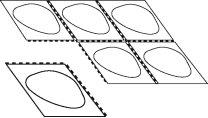
Рисунок 1.
- Откройте ячейку
Аккуратно удалите защитную пленку, начиная с угла, указанного стрелкой (Рисунки 2 и 3).
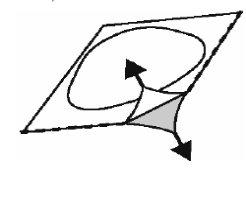
Рисунок 2.
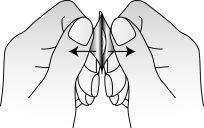
Рисунок 3.
- Выньте буко-диспергируемую таблетку
Выньте буко-диспергируемую таблетку сухими руками и положите ее на язык (Рисунок 4).
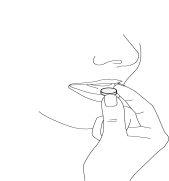
Рисунок 4.
Она быстро растворится и может быть проглочена без воды.
Когда можно ожидать улучшения
Обычно Миртазапин Тарбис начнет действовать после 1-2 недель, и после 2-4 недель вы можете начать чувствовать себя лучше. Важно, чтобы в течение первых недель лечения вы говорили с вашим врачом о эффектах миртазапина:
?между 2 и 4 неделями после начала приема миртазапина поговорите с вашим врачом о том, как этот препарат повлиял на вас.
Если вы еще не чувствуете себя лучше, ваш врач может назначить вам более высокую дозу. В этом случае поговорите с вашим врачом снова после еще 2-4 недель.
Обычно вам потребуется принимать миртазапин до тех пор, пока симптомы депрессии не исчезнут в течение 4-6 месяцев.
Если вы приняли больше Миртазапина Тарбиса, чем должны были
?Если вы или кто-то другой приняли слишком много Миртазапина Тарбиса, проконсультируйтесь с врачом немедленно. Вы также можете позвонить в Токсикологическую информационную службу, телефон 91 562 04 20.
Самые вероятные симптомы передозировки миртазапина (без других препаратов или алкоголя) являются сонливость, дезориентация и сердцебиение.
Если вы забыли принять Миртазапин Тарбис
Если вам необходимо принимать дозу один раз в день
- если вы забыли принять дозу миртазапина, не принимайте пропущенную дозу. Пропустите ее и принимайте обычную дозу на следующий день.
Если вам необходимо принимать дозу два раза в день
- если вы забыли утреннюю дозу, просто принимайте ее вместе с вечерней дозой
- если вы забыли вечернюю дозу, не принимайте ее на следующее утро; пропустите ее и продолжайте с обычными дозами утром и вечером.
- если вы забыли обе дозы, не пытайтесь их наверстать. Пропустите обе дозы и на следующий день продолжайте с обычной дозой утром и вечером.
Если вы прекратите лечение Миртазапином Тарбис
?Прекратите прием миртазапина только после консультации с вашим врачом.
Если вы прекратите слишком рано, депрессия может вернуться. Когда вы почувствуете себя лучше, поговорите с вашим врачом. Ваш врач решит, когда можно прекратить лечение.
Не прекращайте прием миртазапина внезапно, даже если депрессия исчезла. Если вы прекратите прием миртазапина внезапно, вы можете чувствовать себя больным, головокружением, агитацией или тревогой и испытывать головные боли. Эти симптомы можно избежать, постепенно прекращая лечение. Ваш врач укажет, как постепенно уменьшить дозу.
Если у вас есть какие-либо другие вопросы о применении этого препарата, проконсультируйтесь с вашим врачом или фармацевтом.
4. Возможные побочные эффекты
Как и все лекарства, Миртазапин Тарбис может вызывать побочные эффекты, хотя не все люди испытывают их.
Некоторые побочные эффекты более вероятны, чем другие. Возможные побочные эффекты миртазапина указаны ниже и могут быть разделены на:
- Очень частые:затрагивают более 1 из 10 пациентов
- Частые:затрагивают от 1 до 10 из 100 пациентов
- Нечастые:затрагивают от 1 до 10 из 1 000 пациентов
- Редкие:затрагивают от 1 до 10 из 10 000 пациентов
- Очень редкие:затрагивают менее 1 из 10 000 пациентов
- Неизвестная:не может быть оценена из доступной информации
Очень частые:
- увеличение аппетита и увеличение веса
- сонливость
- головная боль
- сухость во рту
Частые:
- летаргия
- головокружение
- дрожь
- тошнота
- диарея
- рвота
- запор
- крапивница или высыпания на коже (экзантема)
- боль в суставах (артралгия) или мышцах (миалгия)
- боль в спине
- головокружение или обморок при быстром подъеме (ортостатическая гипотония)
- отек (обычно на лодыжках или ногах) из-за задержки жидкости (эдема)
- усталость
- яркие сны
- спутанность сознания
- тревога
- затруднения со сном
- проблемы с памятью, которые в большинстве случаев решались после прекращения лечения.
Нечастые:
- чувство чрезмерного эйфории (мания)
?Прекратите принимать миртазапин и обратитесь к врачу немедленно.
- необычное ощущение в коже, например, жжение, покалывание, онемение или ползание (парестезия)
- непроизвольные движения ног во время сна
- обморок (синкоп)
- чувство онемения во рту (оральная гипоэстезия)
- низкое давление
- кошмары
- агитация
- галлюцинации
- неспособность оставаться неподвижным
Редкие:
- желтушность глаз или кожи; может указывать на нарушения функции печени (желтуха).
?Прекратите принимать миртазапин и обратитесь к врачу немедленно.
- тики или мышечные сокращения (миоклонус)
- панкреатит
Частота неизвестна:
- признаки инфекции, такие как высокая температура, внезапная и необъяснимая, боль в горле и язвы во рту (агранулоцитоз).
?Прекратите принимать миртазапин и обратитесь к врачу немедленно для сдачи анализа крови.
В редких случаях миртазапин может вызывать нарушения производства кровяных клеток (депрессия костного мозга). Некоторые люди становятся менее устойчивыми к инфекциям, потому что миртазапин может вызывать временное уменьшение количества белых кровяных клеток (гранулоцитопения). В редких случаях миртазапин также может вызывать уменьшение количества красных и белых кровяных клеток и тромбоцитов (апластическая анемия), уменьшение количества тромбоцитов (тромбоцитопения) или увеличение количества белых кровяных клеток в крови (эозинофилия).
- припадок (конвульсии).
?Прекратите принимать миртазапин и обратитесь к врачу немедленно.
- комбинация симптомов, таких как необъяснимая температура, потоотделение, сердцебиение, диарея, мышечные сокращения (не контролируемые), озноб, усиленные рефлексы, агитация, изменения настроения и потеря сознания. В очень редких случаях эти симптомы могут быть признаками расстройства, называемого "серотониновый синдром".
?Прекратите принимать миртазапин и обратитесь к врачу немедленно.
- мысли о причинении вреда себе или суицидальные мысли
?Прекратите принимать миртазапин и обратитесь к врачу немедленно.
- необычные ощущения во рту (оральная парестезия)
- отек во рту (оральный эдема)
- гипонатремия
- неправильная секреция антидиуретического гормона
- увеличение уровня креатинкиназы в крови
- затруднение мочеиспускания (задержка мочи)
- боль в мышцах, скованность и/или слабость, потемнение или изменение цвета мочи (рабдомиолиз).
- красные пятна на туловище, как ограниченные или круглые, часто с пузырями в центре, отслоение кожи, язвы во рту, горле, носу, гениталиях и глазах. Эти тяжелые кожные высыпания могут предшествовать лихорадке и симптомам гриппа (синдром Стивенса-Джонсона, токсический эпидермальный некролиз) ?Прекратите принимать миртазапин и обратитесь к врачу немедленно.
- общий эритем, повышенная температура тела и увеличение размера лимфатических узлов (синдром DRESS или синдром лекарственной гиперчувствительности) ?Прекратите принимать миртазапин и обратитесь к врачу немедленно.
Если вы испытываете побочные эффекты, обратитесь к врачу или фармацевту, даже если это побочные эффекты, которые не указаны в этом описании.
Сообщение о побочных эффектах:
Если вы испытываете любой тип побочного эффекта, обратитесь к врачу или фармацевту, даже если это возможные побочные эффекты, которые не указаны в этом описании. Вы также можете сообщить об этом напрямую через Испанскую систему фармаковигиланса лекарственных средств для человека: https://www.notificaram.es. Сообщая о побочных эффектах, вы можете способствовать предоставлению более полной информации о безопасности этого лекарства.
5. Хранение Миртазапина
Храните это лекарство вне поля зрения и досягаемости детей.
Не используйте это лекарство после даты истечения срока годности, указанной на упаковке и блистере после CAD. Дата истечения срока годности - последний день месяца, указанного.
Не храните при температуре выше 25°C.
Храните в оригинальной упаковке для защиты от света и влаги
Лекарства не должны выбрасываться в канализацию или мусор. Поместите упаковку и лекарства, которые вам больше не нужны, в пункт SIGRE аптеки. В случае сомнений спросите у фармацевта, как избавиться от упаковки и лекарств, которые вам больше не нужны. Таким образом, вы поможете защитить окружающую среду.
6. Содержание упаковки и дополнительная информация
Состав Миртазапина Тарбис
- Активное вещество - миртазапин.
Миртазапин Тарбис 15 мг буккальные таблетки содержат 15 мг миртазапина на таблетку.
- Другие компоненты: маннитол, микрокристаллическая целлюлоза, магний карбонат, гидроксипропилцеллюлоза с низкой степенью замещения, коллоидный алюмосиликат, L-метионин, кросповидон, микрокристаллическая целлюлоза и гуаровая камедь (Avicel CE-15), аспартам (E951), аромат силезской апельсини и магний стеарат.
Внешний вид продукта и содержание упаковки
Миртазапин Тарбис 15 мг буккальные таблетки белые, круглые, двояковыпуклые и маркированы «M1» на одной стороне.
Буккальные таблетки упаковываются в детские блистеры, перфорированные для единичной дозы.
Доступны следующие размеры упаковки: 30 буккальных таблеток.
Владелец разрешения на продажу и производитель
Владелец разрешения на продажу:
TARBIS FARMA, S.L.
Гран-Виа Карлоса III, 94
08028-Барселона (Испания)
Производитель
Actavis HF
Рейкьявикювегюр 78
220 Хафнарфьордур
Исландия
Ó
Actavis Limited
BLB 016 Бюлебель Индастриал Эстейт
Зейтун ZTN 3000
Мальта
Дата последнего обновления этого описания:Октябрь 2020
Подробная и актуальная информация о этом лекарстве доступна на сайте Испанского агентства лекарственных средств и медицинских изделий (AEMPS) http://www.aemps.gob.es/

Сколько стоит МИРТАЗАПИН ТАРБИС 15 мг ТАБЛЕТКИ ДЛЯ РАЗЖЕВАНИЯ/ДЛЯ ПЕРОРАЛЬНОГО РАССАЫВАНИЯ в Испании в 2025 году?
Средняя цена на МИРТАЗАПИН ТАРБИС 15 мг ТАБЛЕТКИ ДЛЯ РАЗЖЕВАНИЯ/ДЛЯ ПЕРОРАЛЬНОГО РАССАЫВАНИЯ в декабрь, 2025 года составляет около 8.52 евро. Финальная стоимость может зависеть от региона, конкретной аптеки и рецептурного статуса. Для точной информации лучше проверить онлайн или в ближайшей аптеке.
- Страна регистрации
- Средняя цена в аптеках8.52 EUR
- Активное вещество
- Требуется рецептДа
- Производитель
- Информация носит справочный характер и не является медицинской рекомендацией. Перед приемом любых препаратов проконсультируйтесь с врачом. Oladoctor не несет ответственности за медицинские решения, принятые на основе этого контента.
- Аналоги МИРТАЗАПИН ТАРБИС 15 мг ТАБЛЕТКИ ДЛЯ РАЗЖЕВАНИЯ/ДЛЯ ПЕРОРАЛЬНОГО РАССАЫВАНИЯФорма выпуска: ТАБЛЕТКА, 15 мгАктивное вещество: миртазапинаПроизводитель: Laboratorios Alter S.A.Требуется рецептФорма выпуска: ТАБЛЕТКА, 30 мгАктивное вещество: миртазапинаПроизводитель: Laboratorios Alter S.A.Требуется рецептФорма выпуска: ТАБЛЕТКА, 15 мгАктивное вещество: миртазапинаПроизводитель: Almus Farmaceutica S.A.U.Требуется рецепт
Аналоги МИРТАЗАПИН ТАРБИС 15 мг ТАБЛЕТКИ ДЛЯ РАЗЖЕВАНИЯ/ДЛЯ ПЕРОРАЛЬНОГО РАССАЫВАНИЯ в других странах
Лучшие аналоги с тем же действующим веществом и терапевтическим эффектом.
Аналог МИРТАЗАПИН ТАРБИС 15 мг ТАБЛЕТКИ ДЛЯ РАЗЖЕВАНИЯ/ДЛЯ ПЕРОРАЛЬНОГО РАССАЫВАНИЯ в Польша
Аналог МИРТАЗАПИН ТАРБИС 15 мг ТАБЛЕТКИ ДЛЯ РАЗЖЕВАНИЯ/ДЛЯ ПЕРОРАЛЬНОГО РАССАЫВАНИЯ в Украина
Врачи онлайн по МИРТАЗАПИН ТАРБИС 15 мг ТАБЛЕТКИ ДЛЯ РАЗЖЕВАНИЯ/ДЛЯ ПЕРОРАЛЬНОГО РАССАЫВАНИЯ
Консультация по дозировке, побочным эффектам, взаимодействиям, противопоказаниям и продлению рецепта на МИРТАЗАПИН ТАРБИС 15 мг ТАБЛЕТКИ ДЛЯ РАЗЖЕВАНИЯ/ДЛЯ ПЕРОРАЛЬНОГО РАССАЫВАНИЯ – по решению врача и с учетом местных правил.









